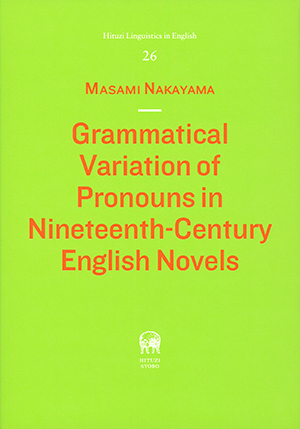2018年2月刊行

Hituzi Linguistics in English No.26
Grammatical Variation of Pronouns in Nineteenth-Century English Novels
Masami Nakayama(中山匡美著)
菊判上製カバー装 272頁 定価12000円+税
ISBN 978-4-89476-901-4
 |
Hituzi Linguistics in English No.26Grammatical Variation of Pronouns in Nineteenth-Century English NovelsMasami Nakayama(中山匡美著) 菊判上製カバー装 272頁 定価12000円+税 ISBN 978-4-89476-901-4 |


